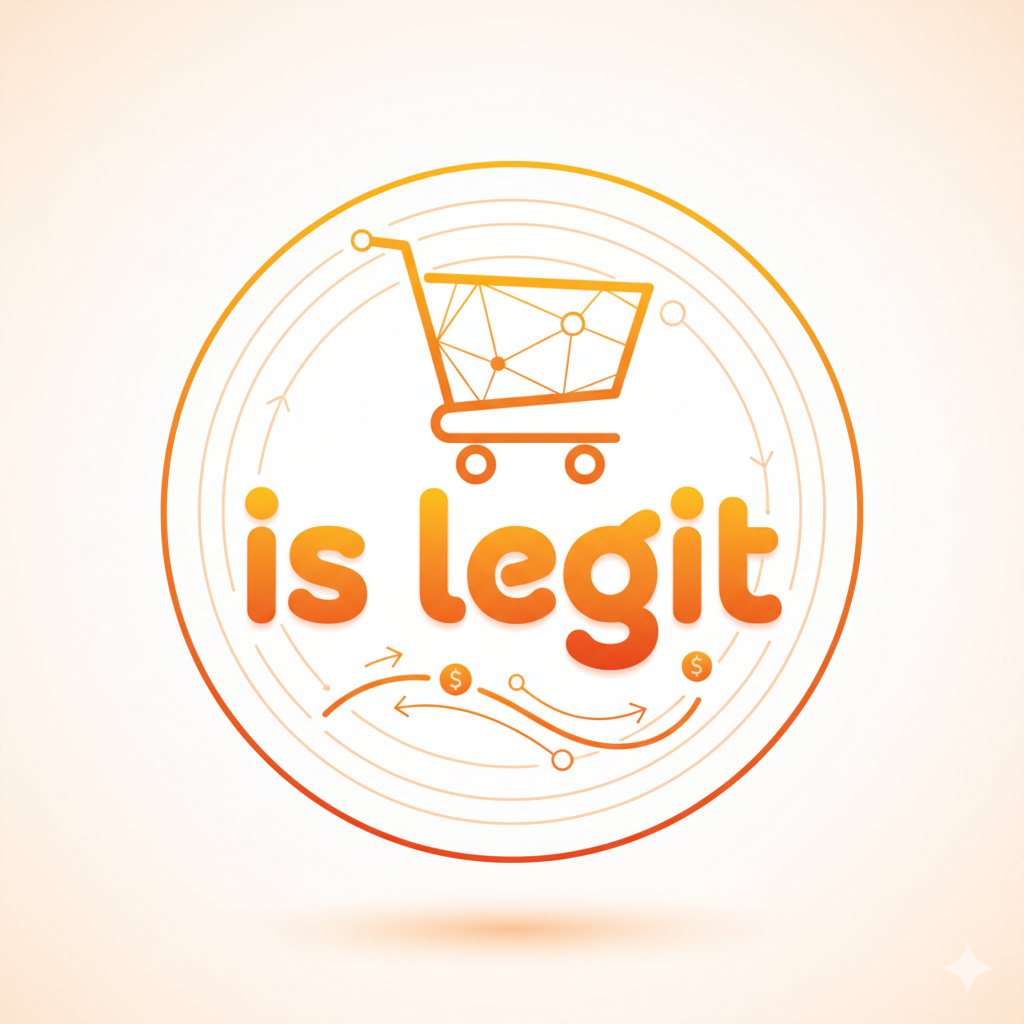E-commerce has grown into a global powerhouse. But despite its popularity, many people still wonder: “Is e-commerce legit?” After all, the internet has its share of scams, frauds, and fake stores. The truth is, e-commerce is completely legitimate, but like any system, there are risks. Knowing how to navigate it can make online shopping and selling safe, profitable, and reliable.
Let’s explore this in depth.
Understanding E-commerce
E-commerce, short for electronic commerce, is the buying and selling of products or services online. It’s not limited to big platforms like Amazon, Flipkart, or Shopify. It also includes small businesses, digital product marketplaces, and even individual creators selling directly to customers.
E-commerce is broadly divided into categories:
- B2C (Business to Consumer): A brand selling directly to consumers. Example: Nike selling shoes online.
- B2B (Business to Business): Companies selling products to other companies. Example: A supplier selling raw materials online.
- C2C (Consumer to Consumer): Individuals selling to other individuals. Example: eBay or OLX.
- D2C (Direct to Consumer): A brand sells directly to customers, bypassing retailers. Example: Glossier.
Understanding these models helps clarify how money flows, where risks exist, and why the system is legitimate.
Why Some People Distrust E-commerce
Despite its growth, skepticism exists. Common reasons include:
- Scams and Fraudulent Websites: Fake stores may take your money and never deliver.
- Poor Product Quality: Images online may not match reality.
- Identity Theft: Entering personal or card details on insecure sites can lead to fraud.
- Shipping and Delivery Issues: Delays or missing products can frustrate buyers.
However, these problems are exceptions, not the rule. Most e-commerce platforms have strong systems to prevent these issues.
How to Identify Legitimate E-commerce Platforms
A legitimate e-commerce platform typically has:
- Secure Transactions: HTTPS encryption, secure payment gateways, and trusted payment methods like credit cards, UPI, or PayPal.
- Verified Reviews: Real customer reviews that are transparent and moderated.
- Clear Policies: Returns, refunds, warranties, and privacy policies that are easy to find.
- Professional Support: Email, phone, or live chat support.
- Legal Compliance: GST numbers, company registration, and terms of service.
These indicators are especially important for smaller, unknown online stores.
Buyer’s Guide: How to Shop Safely Online
For anyone buying online, safety and smart choices are key. Here’s a detailed guide:
1. Research Before Buying
- Check product reviews on multiple platforms.
- Look for seller history and credibility.
2. Use Secure Payment Options
- Avoid direct bank transfers to unknown sellers.
- Use credit cards, PayPal, or UPI with secure gateways.
3. Check Return and Refund Policies
- A legit store always provides clear return rules.
- Verify timelines, shipping costs, and warranty coverage.
4. Avoid Suspicious Deals
- Unrealistic discounts or free giveaways can be traps.
- Stick to trusted platforms whenever possible.
5. Track Your Orders
- Use tracking links to monitor deliveries.
- Contact support immediately if issues arise.
Seller’s Guide: Starting an E-commerce Business
For sellers, e-commerce offers huge potential. But legitimacy comes with responsibility.
Step 1: Choose a Platform
- Marketplaces: Amazon, Flipkart, Etsy (good for beginners).
- Own Store: Shopify, WooCommerce, or Squarespace (full control).
Step 2: Understand Legal Requirements
- Register your business.
- Obtain GST, digital tax registration, or any required licenses.
Step 3: Focus on Product Quality
- Ensure high-quality images, clear descriptions, and honest claims.
- Offer warranties or satisfaction guarantees.
Step 4: Set Up Secure Payments
- Use trusted gateways like Razorpay, Stripe, or PayPal.
- Protect buyer information with SSL encryption.
Step 5: Handle Logistics Efficiently
- Partner with reliable courier services.
- Keep clear shipping and return processes.
Step 6: Market Your Store
- Use social media, email marketing, SEO, and ads to reach customers.
- Collect feedback and continuously improve your products and service.
Tools That Make E-commerce Safer
Both buyers and sellers can benefit from tools that enhance security, tracking, and management:
- Payment Gateways: Razorpay, Stripe, PayPal
- Inventory Management: Zoho Inventory, Shopify POS
- Analytics: Google Analytics, Hotjar
- Fraud Protection: Sift, Signifyd
- Customer Support: Zendesk, Freshdesk
Using these tools reduces risks and improves trust in the e-commerce ecosystem.
E-commerce for Sellers: Is It Legit?
If you’re considering selling online, e-commerce is not only legitimate but highly lucrative.
Benefits:
- Low Initial Investment: Compared to a physical store, starting online is cheaper.
- Global Reach: You can sell internationally without opening multiple stores.
- Automated Systems: Payment, shipping, and inventory management can be automated.
- Analytics and Insights: Platforms provide detailed data to improve sales strategies.
Risks to Be Aware Of:
- Competition: E-commerce is crowded; marketing is essential.
- Fraudulent Buyers: Chargebacks or fake orders can cause losses.
- Platform Dependency: Selling through marketplaces may reduce control over branding and policies.
By understanding these factors and using reliable platforms like Shopify, Amazon, Etsy, or WooCommerce, selling online becomes safe and profitable.
Advantages of E-commerce
For both buyers and sellers, e-commerce offers tangible benefits:
- Convenience: Shop or sell anytime, anywhere.
- Variety: Millions of products or niches available.
- Lower Overheads: No need for physical infrastructure.
- Transparency: Customer reviews and ratings increase trust.
- Innovation: Subscription boxes, digital products, dropshipping, and AI-driven recommendations make e-commerce dynamic.
How to Avoid Scams
Even though e-commerce is legit, vigilance is key. Some practical steps:
- Check Website Security: Look for HTTPS, SSL certificates, and secure payment gateways.
- Research the Seller: Look for reviews, social media presence, and website age.
- Start Small: Make a small purchase to test reliability.
- Avoid Deals That Are Too Good: Unrealistic discounts are often traps.
- Use Trusted Platforms: Stick to marketplaces with buyer protection.
Industry Insights: E-commerce Is Growing
- Global e-commerce sales reached $5.9 trillion in 2024.
- Over 2.14 billion people shop online worldwide.
- Platforms like Amazon and Shopify have strict monitoring systems, keeping fraud rates relatively low.
These stats reinforce that e-commerce is not only legitimate but one of the fastest-growing industries in the world.
Conclusion
E-commerce is absolutely legit for both buyers and sellers. The key is to:
- Research before buying or selling.
- Use secure platforms and payment methods.
- Understand policies, returns, and legal requirements.
- Stay vigilant and avoid shortcuts.
Whether you want to start an online store, sell digital products, or shop for convenience, e-commerce offers a safe, profitable, and scalable opportunity. Done right, it’s not just legitimate—it’s the future of commerce.



Pingback: What Is the Impact of Mobile Marketing on E-commerce? - Pratsify
Pingback: What’s the Best E-commerce Fraud Protection for Small Online Stores? - Pratsify